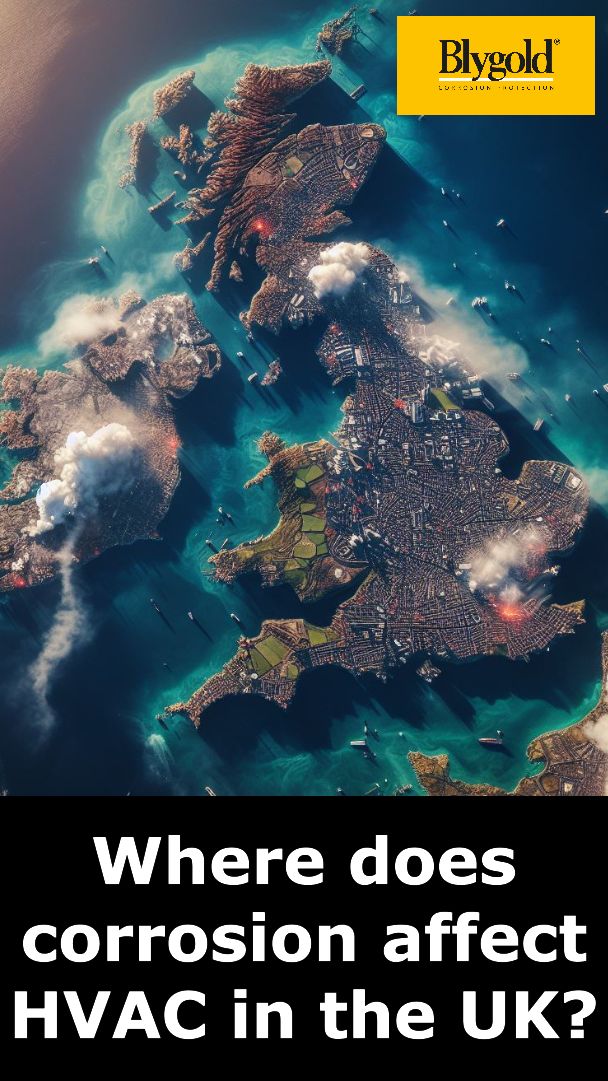UK HVAC Corrosion Locations: Can we be precise?
Precision identification of UK HVAC corrosion locations is not an exact science.
In many meetings that I attend, people assume that protective coatings for Heating, Ventilation & Air Conditioning (HVAC) are for units next to the sea.
The ISO 12944 standard classifies the corrosivity of environments into different categories, ranging from C1 to C5M, based on factors such as temperature, humidity, condensation, and the presence of corrosive pollutants in the atmosphere. In the case of the UK being an island nation, factors such as its maritime climate, prevailing wind patterns, industrial activity, and proximity to coastal areas influence the distribution of corrosive environments.
ISO 12944 standard classifications
Here’s a general breakdown of the ISO 12944 classifications and their relevance to the UK:
1. **C1 to C2:** These categories represent low to moderate corrosivity environments, typically found in indoor or rural areas with low pollution levels and minimal exposure to harsh weather conditions. In the UK, inland regions away from industrial centres and coastal areas may fall within this classification.
2. **C3:** This category represents a moderate corrosivity environment, often found in urban and industrial areas with moderate pollution levels and exposure to occasional wetting or condensation. Many urban areas and industrial zones in the UK may fall within this classification as well as airports, flight paths, motorways and railway lines.
3. **C4 to C5M:** These categories represent high to very high corrosivity environments, typically found in coastal areas, industrial zones, or regions with severe pollution levels and exposure to harsh weather conditions. Coastal regions, particularly those exposed to salt-laden sea spray, as well as heavily industrialized areas in the UK, may fall within these classifications.
It’s important to note that the proportion of the country affected by each classification can vary based on local factors such as proximity to industrial sites, prevailing wind patterns, and topographical features. Additionally, microclimates within regions can further influence the corrosivity of the environment.
While it’s challenging to provide a specific proportion of the UK affected by each ISO 12944 classification without detailed environmental data and analysis, coastal regions and industrialized areas are generally more prone to higher corrosivity levels (C4 to C5M), while inland and rural areas may experience lower levels of corrosivity (C1 to C3).
To mitigate the risk of corrosion of your HVAC investment, just protect it, wherever you are located.
Looking for some industry HVAC news? Try the link, below.
Blygold is an ISO 9001:2015 Certified Company



